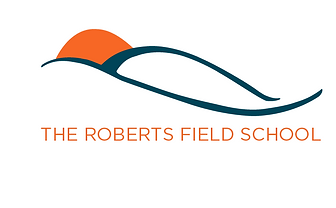Light and Joy in Work and Learning
- Khahtee V Turner

- Mar 10, 2022
- 3 min read

In our last Field Notes, we wrote about our beautiful winter focus on light particularly in our DITF curriculum. As we make our way through the increasingly longer and lighter days of February, we also focus on developing our own internal light–a lightheartedness of sorts. Our February Professional Development theme is Happiness in the Workplace. We began by examining how the tenants of professional happiness overlap with the most effective ways to support literacy.
Back in our earliest September Field Notes, we outlined why we take the time we do to intentionally and consistently build community. Part of the reason is happiness leads to better learning. In addition to the feel-good, warm and fuzzies of a mindful, close-knit community, there is well-researched brain science connecting the tenants of happiness and exceptional learning environments. To give you a sense of the science behind our focus on happiness both in the classroom and in our professional lives, consider the following:
Sharon Salzberg’s Eight Pillars of Happiness in the Workplace:
Balance: ability to differentiate between your identity and your job
Concentration: distraction-free environment
Compassion: being aware of and empathetic to self and others
Resilience: confidence in recovery from frustration and failure
Communication and Connection: everything we do and say connects OR disconnects
Integrity: work infused with deep ethical values
Meaning: work infused with personal relevance
Open Awareness: big picture appreciation, viewing ourselves as part of a greater whole
And Katie Egan Cunningham’s Seven Happiness Pillars from Start with Joy: Designing Literacy Learning for Student Happiness:
Connection: Our social brain is the gateway to cognition (Kuhl, 2007)
Choice: Control leads to compliance; autonomy leads to engagement (Pink, 2009)
Challenge: We are most motivated to rise to the challenge when concentration is supported by personal meaning.
Play: Playful learning leads to a state of “flow” (Csikszentmihalyi, 1990)
Playful learning is
Joyful
Meaningful
Active and engaged
Iterative
Social
Story: Information presented as stories can be up to 22 times more memorable than facts alone (Aaker, 2013)
Discovery: Curiosity builds positive emotions and decreases anxiety, which increases cognitive function (Fredrickson, 2001)
Movement: Purposeful, planned movement helps meet students’ physical, emotional, and cognitive needs (Lyding et al, 2014)
The common themes are abundant! See if you can notice ways these pillars of happiness play out at home in your family’s lives. If you’re looking for new ways to inject a bit of illumination and lightheartedness at home, consider incorporating some of the following ideas and activities into your family time:
5 minute impromptu freeze dance - take turns choosing the music and freezing the music
Dinnertime/Bedtime Gratitude practice - make a practice of sharing highlights from your day for which you are grateful.
Create ‘gratitude flags’ - small pieces of fabric on which you write down (and illustrate if you’d like!) aspects of life for which you are grateful —hang your flags from a string in a window where you can be reminded of happiness.
Take a mindful walk (or make your commute to and from school mindful)
Point out 5 man-made things you can see and 5 natural things
Listen for and pick out sounds of man-made things and sounds of nature
Count how many birds you see (particularly fun when a flock flies past!)
Take 5 pictures of things that make you all feel happy
Have a fake laughing competition. Who can do the funniest laugh?
Have a crawling race across the living room
Have a funny voice competition
Play chase and tickle the catchee when caught (assuming everyone is good with the tickles!)
See who can do the silliest walk
Take time to perform or watch your children perform - sing, dance, draw, tell or act out stories
Finally, share the joy! Every week we begin our faculty meetings by sharing the highlights from our week. We don’t ignore our professional hurdles but rather set the stage for tackling our challenges by fortifying our creative, problem-solving juices through a focus on moments of success and inspirational breakthroughs. We’d love to learn about moments of light, discovery, and joy in the lives of your families. Send photos and stories to Robin at robin@robertsfieldschool.org. We would love to gather them all together and then share them with you, our RFS community. In Light & Joy, Khahtee and Carney








Comments